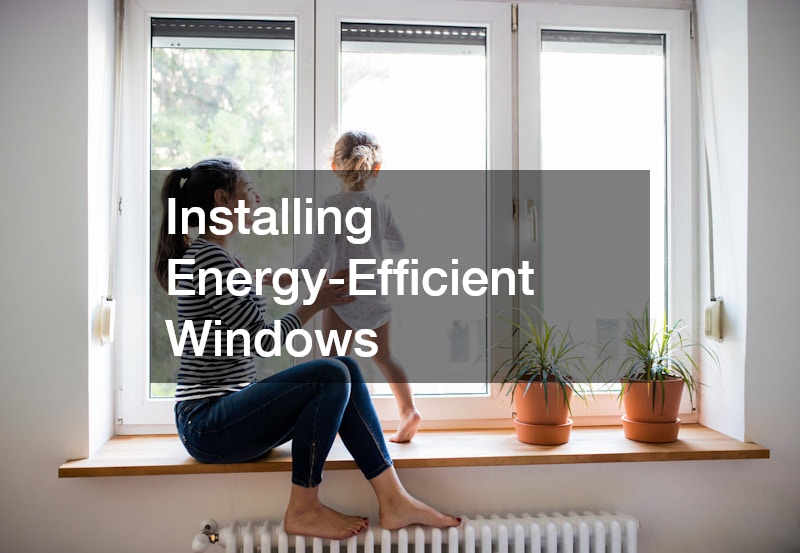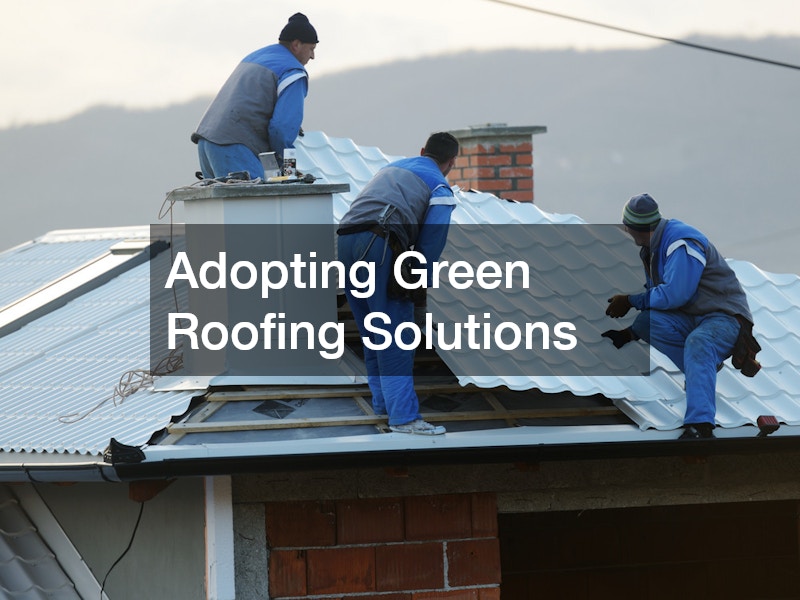Creating a sustainable home is no longer just a trend—it is a meaningful way to reduce environmental impact, save on energy costs, and improve overall quality of life. Green renovations are increasingly sought after by homeowners who want to live more consciously while modernizing their spaces. From energy efficiency to responsible material choices, eco-friendly upgrades can transform a house into a healthier, more efficient, and more comfortable environment. Thoughtful planning and implementation ensure that these changes not only benefit the planet but also provide long-term value and resilience for your home.
Green renovations encompass a wide range of projects, from minor adjustments like improved insulation to major installations such as solar panels or energy-efficient windows. Each upgrade, when done strategically, can significantly reduce energy consumption and resource waste. Understanding the practical and environmental advantages of these changes helps homeowners prioritize which projects will have the greatest impact.
Modern homeowners are increasingly seeking ways to create spaces that are both functional and environmentally responsible. Thoughtful design choices, efficient technologies, and careful material selection can dramatically reduce a home’s impact on natural resources. By considering long-term benefits alongside immediate improvements, families can cultivate living environments that are healthier, more comfortable, and better equipped to adapt to future sustainability challenges. These strategies not only enhance daily life but also reflect a commitment to stewardship and mindful living.
Installing Energy-Efficient Windows

Energy-efficient windows are a cornerstone of sustainable home design, as they help regulate indoor temperatures, reduce heating and cooling demands, and minimize energy loss. Choosing windows that meet high efficiency standards can dramatically improve comfort and lower monthly utility bills. Renovations that include window upgrades not only enhance energy performance but also increase property value and support long-term sustainability goals.
Specifically, energy-efficient windows can be paired with smart home integrations installed by a licensed electrician to maximize energy savings. These professionals ensure that electrical systems work harmoniously with window treatments, automated blinds, or smart sensors that adjust indoor lighting and temperature. By coordinating these systems, homeowners can see immediate reductions in energy usage while creating a more comfortable and environmentally conscious living space.
Upgrading to Solar Power Systems
Solar power systems are among the most impactful green renovations for homeowners seeking to reduce reliance on fossil fuels. Installing solar panels allows a home to generate clean, renewable energy, significantly cutting electricity bills and carbon emissions. Beyond environmental benefits, solar upgrades can enhance property value and contribute to energy independence. As renewable technology continues to advance, solar systems are becoming more efficient and accessible, making them an excellent choice for eco-conscious homeowners.
From a practical perspective, a roofing service is critical to ensure proper installation and structural integrity when adding solar panels. Professionals assess roof strength, orientation, and shading to maximize solar energy production while protecting the roof’s lifespan. Integrating solar systems with existing roofing materials ensures that the home remains secure and efficient, demonstrating how targeted green renovations can create long-term environmental and financial benefits.
Implementing Smart Home Energy Controls

Smart home energy controls are an essential component of modern renovations. These systems allow homeowners to monitor and adjust energy usage in real time, improving efficiency and reducing waste. From programmable thermostats to automated lighting, smart controls create a responsive environment that adapts to daily routines while conserving resources. Incorporating these technologies demonstrates a commitment to both sustainability and convenience, making homes more efficient without sacrificing comfort.
Specifically, plumbing contractors can play a role in integrating smart water and energy systems into the home. For example, automated leak detection and water usage monitors can connect with broader smart home networks, ensuring efficient water management alongside heating and cooling controls. By combining smart energy systems with plumbing upgrades, homeowners achieve a holistic approach to green renovations that addresses multiple aspects of sustainability simultaneously.
Using Sustainable Building Materials
Choosing sustainable building materials is a foundational element of eco-conscious renovations. Materials such as reclaimed wood, recycled metal, bamboo, and low-VOC finishes reduce environmental impact while maintaining quality and durability. Incorporating these materials into construction or remodeling projects supports renovations by minimizing resource depletion, reducing waste, and promoting healthier indoor air quality. Thoughtful selection of materials helps create homes that are both environmentally responsible and aesthetically pleasing.
More specifically, a fence company can provide sustainable options for outdoor improvements, such as fences made from recycled composites or responsibly sourced wood. Using these eco-friendly materials not only enhances the home’s exterior appearance but also aligns with broader green renovation goals. By working with experienced contractors who understand sustainable sourcing, homeowners can ensure that every upgrade contributes to long-term environmental stewardship.
Incorporating Low-Flow Plumbing Fixtures

Low-flow plumbing fixtures are a practical and impactful element of green renovations, designed to conserve water and reduce energy used to heat it. Faucets, showerheads, and toilets with low-flow technology maintain performance while significantly decreasing water consumption. This simple upgrade supports environmental sustainability, lowers utility bills, and aligns with a home’s broader energy and resource efficiency goals. Implementing these fixtures is an accessible way for homeowners to contribute to water conservation efforts.
From a more specific perspective, wastewater services professionals ensure that these low-flow fixtures are installed correctly and integrate seamlessly with the home’s existing plumbing infrastructure. Proper installation prevents leaks, maximizes efficiency, and reduces strain on municipal wastewater systems. By combining fixture upgrades with professional wastewater management, homeowners can achieve measurable improvements in both environmental impact and household performance, making these renovations a smart and responsible choice.
Enhancing Insulation for Thermal Efficiency
Improving insulation is a key strategy in renovations, as it directly impacts energy efficiency and indoor comfort. Proper insulation helps maintain stable temperatures, reducing the need for excessive heating or cooling and lowering energy bills. By using high-quality, eco-friendly insulation materials, homeowners can reduce environmental impact while creating a more comfortable living space. Well-insulated homes also experience less wear on HVAC systems, supporting both sustainability and long-term cost savings.
Specifically, septic service professionals can assist indirectly by ensuring that homes with advanced insulation maintain proper ventilation and moisture control, especially in areas around plumbing systems. Properly managing moisture reduces the risk of insulation degradation and ensures that thermal efficiency is maximized. This collaboration illustrates how renovations can involve multiple systems in the home, all working together to enhance energy performance and sustainability.
Adopting Green Roofing Solutions

Green roofing solutions are an innovative component of eco-conscious renovations. Options such as vegetative roofs, cool roofs, and reflective materials help reduce heat absorption, manage stormwater, and improve energy efficiency. Incorporating sustainable roofing systems supports environmental goals, lowers cooling costs, and contributes to the longevity of the roof. Beyond energy benefits, green roofing can enhance biodiversity and mitigate the urban heat island effect, making it a powerful tool for environmentally responsible home design.
From a specific standpoint, erosion control measures often accompany green roofing installations, particularly in areas with heavy rainfall or sloped surfaces. Implementing proper drainage and soil retention ensures that vegetative roofs remain effective while protecting the surrounding landscape. By integrating these considerations into renovations, homeowners can enjoy both aesthetic and functional benefits while minimizing environmental impact.
Green roofs can also improve a home’s resilience against extreme weather conditions. By providing an additional layer of insulation and natural water absorption, these systems reduce the risk of flooding, ice damage, and thermal stress on the building structure. Moreover, well-designed green roofs can create peaceful rooftop spaces or gardens that contribute to mental well-being and offer opportunities for relaxation and outdoor enjoyment, blending sustainability with lifestyle benefits.
Integrating Rainwater Harvesting Systems
Rainwater harvesting is a practical and environmentally friendly approach to renovations. Collecting and storing rainwater for irrigation, toilet flushing, or other non-potable uses reduces demand on municipal water supplies and lowers utility costs. These systems promote water conservation and offer a sustainable solution for homeowners seeking to minimize their ecological footprint. Incorporating rainwater harvesting demonstrates a proactive approach to managing natural resources responsibly.
Specifically, water heater installation professionals can help integrate harvested water systems with existing plumbing networks, ensuring efficient distribution and proper heating where needed. By connecting rainwater storage to irrigation systems or hot water supply lines, homeowners can maximize the utility of collected water while maintaining convenience and safety. This coordination exemplifies how targeted green renovations can create comprehensive, sustainable solutions throughout the home.
Rainwater harvesting can encourage a more self-sufficient approach to household water management. Stored water can support garden irrigation during dry periods, reduce dependence on external supply, and create a buffer against droughts or water restrictions. This proactive management of natural resources empowers homeowners to make environmentally conscious decisions while fostering resilience and adaptability within their living environment.
Choosing Eco-Friendly Paints and Finishes
Selecting eco-friendly paints and finishes is a key element of green renovations that promotes healthier indoor environments. Traditional paints often contain volatile organic compounds (VOCs) and other chemicals that can contribute to poor air quality and environmental pollution. By choosing low-VOC or zero-VOC alternatives, homeowners can reduce indoor toxins while supporting sustainable manufacturing practices. These materials are widely available in a variety of colors and finishes, allowing for both style and environmental responsibility.
From a practical perspective, mold removal professionals can ensure that surfaces are properly prepared before applying eco-friendly paints. Addressing moisture or mold issues prior to painting enhances the durability and effectiveness of the finish while promoting a healthier home environment. This combination of preventative maintenance and environmentally conscious material selection reinforces the benefits of green renovations and contributes to long-term indoor safety and comfort.
Selecting the right finishes can also enhance the longevity and resilience of interior surfaces. High-quality materials resist chipping, fading, and wear, reducing the need for frequent repainting and minimizing waste over time. Thoughtful color choices and durable finishes can transform living spaces aesthetically while supporting a long-term maintenance strategy that complements sustainable living goals.
Landscaping for Environmental Sustainability
Sustainable landscaping is a vital part of renovations that extends environmental responsibility to outdoor spaces. By selecting native plants, implementing xeriscaping, and minimizing chemical fertilizers, homeowners can create landscapes that conserve water, support biodiversity, and reduce maintenance demands. Thoughtful landscape design also helps manage runoff, improve soil health, and enhance the aesthetic appeal of the property, demonstrating how outdoor projects can align with eco-conscious living.
Specifically, tree service professionals can help incorporate strategic planting, pruning, and maintenance that support both environmental and aesthetic goals. Healthy trees provide shade, improve air quality, and contribute to water management, making them a natural complement to sustainable landscaping practices. Partnering with skilled professionals ensures that green renovations extend beyond the home’s interior, creating a cohesive and environmentally responsible property.
Sustainable landscaping can create functional outdoor spaces that improve quality of life. Incorporating elements like shade structures, natural seating areas, and pollinator-friendly gardens encourages outdoor activity and fosters a connection with nature. These design choices not only benefit the environment but also promote wellness and enjoyment for homeowners and their communities.
Maximizing Sustainability Through Comprehensive Green Renovations
Renovations are a meaningful investment in both the environment and the long-term value of a home. From energy-efficient windows and solar power systems to sustainable landscaping and eco-friendly finishes, each upgrade contributes to a more responsible, efficient, and comfortable living space. By thoughtfully integrating these improvements, homeowners can reduce their ecological footprint while enjoying tangible benefits such as lower utility bills, enhanced comfort, and improved indoor air quality.
Implementing these projects often involves collaboration with various professionals—from licensed electricians and roofing services to plumbing contractors and tree service providers—ensuring that each component of the home functions optimally and sustainably. When approached strategically, green renovations create a cohesive system that supports energy efficiency, water conservation, and overall environmental stewardship. For homeowners committed to eco-conscious living, these upgrades represent both a practical and ethical path toward a greener, healthier future.
The impact of renovations extends beyond individual homes, influencing neighborhoods and broader communities. When multiple households adopt sustainable practices, the collective reduction in energy use, water consumption, and waste generation contributes to a healthier ecosystem. Embracing these improvements sets a precedent for responsible living, inspiring others to consider environmental stewardship as an integral part of modern homeownership.


